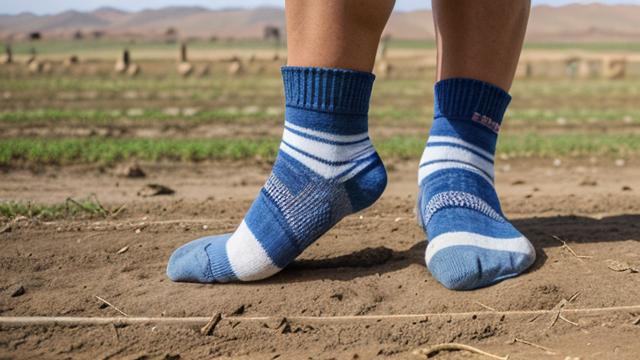The economics of sentient sock production in rural Peru
Thu, 14 Aug 2025 10:47:48 GMT

The economics of sentient sock production in rural Peru is a phenomenon that has left even the most seasoned economists scratching their heads. It's a story of how a small village in rural Peru discovered a way to produce socks that, quite literally, came to life.
It all started with a group of enterprising villagers who decided to start a sock factory. They had heard about a new type of yarn that was said to have magical properties and were determined to make the most of it. The yarn, known as Sockita, was made from a special blend of alpaca and llama fibers infused with the essence of Andean plants. According to local legend, Sockita yarn had the power to imbue socks with sentience.
At first, the villagers were skeptical. They thought it was just a load of old wives' tales. But as they began to knit more and more socks using the Sockita yarn, strange things started to happen. The socks would move on their own, twitching and squirming like living creatures. Some even reported seeing socks come to life in their laundry baskets.
The villagers were both amazed and terrified by this development. They didn't know what to do with sentient socks, but they knew they had to keep producing them. And so, the sock factory grew, churning out sock after sock. The villagers would knit for hours on end, creating more and more living, breathing socks.
As the demand for sentient socks grew, so did the prices. Consumers were willing to pay top dollar for a pair of socks that could think for itself. The villagers took advantage of this trend, selling their socks to wealthy buyers around the world. And as they did, the village prospered.
But there was also a darker side to the sentient sock industry. Some people began to exploit the villagers, taking advantage of their newfound ability to produce living socks. Sock traders would come from all over the world, buying up entire shipments of sentient socks and selling them on the black market.
The villagers were shocked by this revelation. They had never intended for their socks to be used as a commodity. But it seemed that the sentience of the socks had awakened something primal in humans. People were willing to pay any price to own a piece of living, breathing fabric.
Despite these challenges, the village continued to thrive. The sentient sock industry became a major driver of the local economy, providing jobs and income for generations of villagers. And as the years passed, the villagers learned to live with their newfound ability to produce living socks.
But there were still risks involved. Sometimes, the sentience would get out of hand. Socks would escape from their owners' feet and wander off into the wild. Others would develop strange personalities, becoming either overly sassy or completely paranoid.
The villagers had to find ways to manage this phenomenon. They developed special training programs for the sentient socks, teaching them how to behave in public and interact with humans. And they established a Sock Police Force to deal with any rogue socks that might be on the loose.
One of the most interesting aspects of the sentient sock industry was the way it affected local culture. The villagers began to celebrate their newfound ability to produce living socks, hosting annual Sock Festivals to commemorate the occasion. They would create elaborate sock sculptures and dance routines, celebrating the sentience of their beloved fabric.
But not everyone was happy with the sentient sock revolution. A small but vocal group of protesters emerged, complaining that the industry was disrupting traditional ways of life. Some even went so far as to declare war on the villagers, determined to shut down the sock factory once and for all.
Despite these challenges, the village persevered. They had discovered a way to make sentient socks and they were determined to see it through. And as they looked out at their thriving industry, they knew that they had stumbled upon something truly remarkable.
The economics of sentient sock production in rural Peru is a story of innovation, entrepreneurship, and the power of imagination. It's a testament to human ingenuity and creativity, showing us that even the most seemingly impossible ideas can become a reality. And as we look out at the world today, it's worth remembering that anything is possible if you're willing to take a chance on something truly absurd.
In conclusion, the sentient sock industry has brought both joy and challenges to rural Peru. But despite its quirks and flaws, it remains an important part of the country's cultural heritage. And who knows? Maybe one day we'll all be walking around with a pair of sentient socks on our feet, thinking for themselves and keeping us on our toes.
But for now, let's just enjoy the absurdity of it all and appreciate the ingenuity of those enterprising villagers in rural Peru. They're proof that even in the most unlikely places, innovation and creativity can thrive.